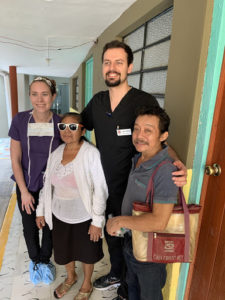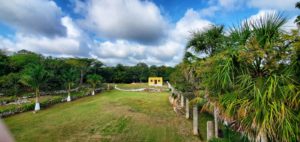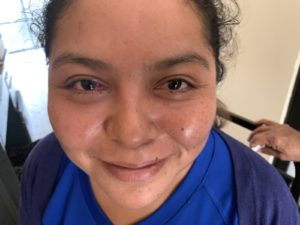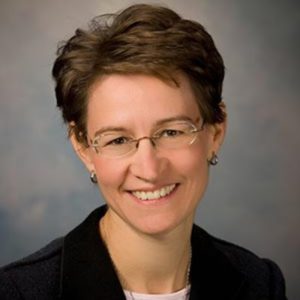Seeing Is Receiving: Sight Mission in Mexico with Parkhurst NuVision LASIK
Sometimes, a week and a willingness are all it takes to change the world.
That’s what the doctors at Parkhurst NuVision have discovered over the years of mission trips to one of the poorest areas of the globe. Most recently, Dr. Parkhurst, his family, and some members of the NuVision team spent a week in the Yucatan Peninsula in January, delivering eye care and surgical vision correction to patients for whom eyesight is especially life-changing.
Situated more than a 2-hour drive west of Cancun and within a short distance of Mayan ruins, Xocenpich, Mexico, is home to just a few hundred villagers who live modestly outside the tourist meccas.
“Tour buses will go nearby there, about 10 miles from (Xocenpich). There is plenty of modern infrastructure there, but it’s kind of amazing because you drive 10 miles away from that, and it’s like you’ve gone back in time 50 years to this little village where there are thatched roofs and stick walls,” Dr. Parkhurst says. “The place we go is very beautiful in many ways. It’s like going to the third world – it’s so rudimentary, there’s just no infrastructure. It’s a very poor place but a very beautiful place.”
Lacking electricity in their dirt-floored homes, many villagers cook over a fire. Those with work do so knowing that they scrape by on the thinnest of margins … and anything that hinders the ability to provide can have catastrophic ramifications.

Mission Trip team members take a snapshot with a happy patient following cataract surgery
“The economic impact of a young workforce-age person going blind is tremendous for their whole family unit, including their children.” There are so many in dire need that the mission team must determine candidacy according to what will have the greatest impact on the entire family and the community at large. The family breadwinner, for example, carries a greater personal burden than someone without dependents.
A local physician – Dr. Federico Estrella, whom Dr. Parkhurst admires as an “everything doctor” because he’s tasked with health care ranging from delivering babies to gallbladder removal surgery – sets the stage for the annual eye surgery clinic by pre-screening prospective patients months ahead of the visit. “They’ll get the word out that the eye team of optometrists and surgeons is coming in January,” he says, “and so, he’ll see a few hundred patients, most of whom are blind, and he’ll determine which ones he thinks we might be able to help.”
The local doctor triaged candidates are scheduled as many as possible for vision correction surgery during the weeklong clinic. By the time Dr. Parkhurst saw them, most of his patients may not have seen their families’ faces, or the food on their plates, let alone the lush vegetation and colorful flora of their homeland for many years. All but a few were completely blind in both eyes, unable to even detect motion at a short distance.

Xocenpich is full of natural beauty and amazing people
“Normally, in the U.S. we grade cataracts on a scale of how dark they are, between 1 and 4,” he explains. “They made up a new scaling system because they’re all worse than 4 here, so in the office, they graded them 5, 6, 7, 8, 9 or 9-plus. So, you can understand why they can’t see anything. You can barely tell the lights are on – that’s it.”
Patients navigated to Xocenpich, often from many miles away, with the help of friends or relatives and inventions born of necessity. They fashioned their own canes out of sticks, he says, using them to find their way.

Patients are overjoyed when they are able to go from virtually blind to seeing the world again
Dr. Parkhurst’s most memorable case this year was one such man, who sat in stunned solitude the day after his surgery, still holding his crude, handmade walking stick. “He was just taking it all in. For a long time, he sat there and just looked. It was really neat to just watch him ‘receive’ his vision.”
By week’s end, Dr. Parkhurst, along with the rest of the team of surgeons, optometrists, and nurses corrected vision for about 70 patients. In order to assist as many as possible, they corrected vision in one eye, instead of both eyes for half that number. As patient after patient marveled at a lush world that had gone unseen for so long, the surgical team marveled just as much over the impact one week had made.

Special Thanks to Dr. Barbara Schroeder, her family and her team. Dr. Schroeder began organizing these mission trips more than 25 years ago, and we are thankful for her service and dedication to the mission of Better Vision for All.
“It’s not perfect but … these are people who, if you wave your hand in front of their face, could not see the movement of your hand – completely blind, so fixing one eye, at least, is completely life-changing.”
Through Parkhurst NuVision’s Mission 2020 Campaign, for every vision correction procedure we perform at Parkhurst NuVision in San Antonio, we provide sight-saving procedures to underserved communities around the world via mission trips as well as donations through The Himalayan Cataract Project. Parkhurst NuVision has been honored to help thousands of patients from all over the world enjoy a fuller life with crisp, clear vision. Learn more about how we’re helping San Antonio cataract surgery patients through innovative Laser Cataract Surgery Technology. Visit us for your LASIK Exam or give us a call at (210) 585-2020 with your questions.

We love the smiling faces and positive attitudes of our volunteers
Be sure to talk to one of our doctors about not only the benefits of vision correction, but also any risks of vision correction that may pertain to your individual needs and circumstances.

